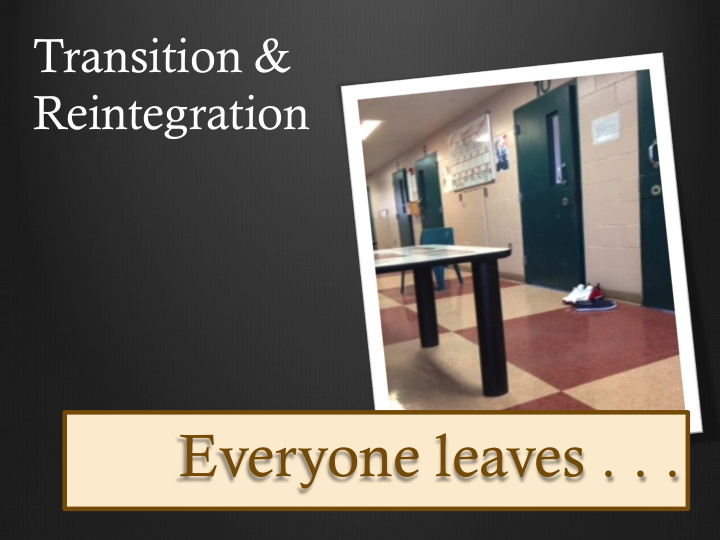



Transition & Reintegration Everyone leaves . . .
Nationally . . . • 2009 US Census: 94,875 youth under the age of 21 in 3,257 publicly and privately owned institutions. (2009 US Census; Tannis, 2014; Read & O’Cummings, 2011; Snyder and Sickmund, 2006) Meaning . . . Roughly 100,000 youth need quality transition programs and reintegration plans
Transition & Reintegration • Providing effective transition services and supporting quality reintegration plans means ending/ slowing the . . . “revolving door” of recidivism & recommitment, The PIPELINE TO PRISON
Transition & Reintegration • Multiple transitions & reintegration • Each brings anxiety and questions • Delicate and integral process • Connects professionals and care givers • Assist youth in acquiring skills and confidence The struggle for youth is too many transitions.
Multiple Transitions & Reintegrations Family School Community Employment
Effective Transition & Reintegration Planning • More anxiety • High recidivism rates • Lack appropriate coping & corrective behaviors • Stressful family/personal situations Needs: advocacy, relationships, engagement, challenge, and opportunity for success.
Transition “Out” Looks Like… • A seamless connection • Family/School/Community culture integration • Parent/Administrative and teacher/Mentor advocacy • Personalized learning and planning • Youth input • Communication with teachers and staff Follow through; follow up; and follow the trail…
Best Practice • Transition specialist “In” and Transition Team “Out” • Eliminate labels, red flags, ease adult anxiety • Connect adults on both sides of transition process • Speak same language Just like with our own children . . . Some level of hand-holding or emotional connections necessary.
• Deep rooted negative habits, practices, social and family Potential Problems connections • Unrealistic expectations of transition without misstep • How schools, families, communities handle error • Lack of patience or flexibility • No creativity in problem solving • Passive acceptance of labeling • When the honeymoon is over • Not enough chances
Transition & Reintegration Gaps Cooperation/ Access Communication Alternatives Collaboration
Job Skills – KCJH Detention Jr. Chef – KRESA EFE Transition/ ILC Reintegration Example Culinary Arts Program- KVCC Employment- Downtown Restaurant Grp.
Transition’s Key Message “We value you. We care about you. We welcome you to our family, school, community and we want to help you be successful.”
Recommend
More recommend